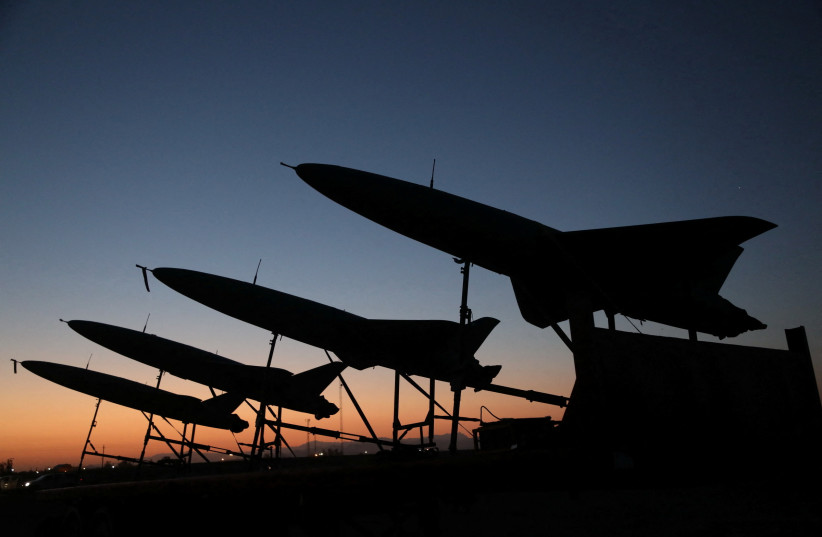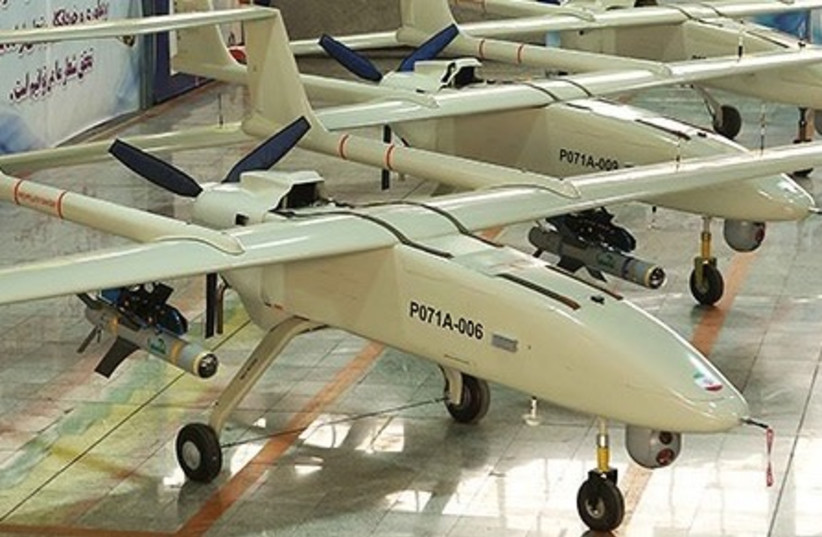A Ukrainian intelligence unit is seeking to create a 1000 unit suicide drone fleet through fundraising, the "Kryla" unit announced on Friday.
The first person view (FPV) kamikaze drones have "become a truly revolutionary means of combat," according to the Ukrainian Intelligence unit, which compared its utility to that of a sniper rifle that could be operated from 10 kilometers away.
Like a sniper, an operator can use such a drone to perform precision strikes, direct fire from other platforms, and provide intelligence on the enemy and surroundings.
"Installed cameras and modern means of communication allow the operator to control the aircraft in "real time" mode, while remaining at a safe," said the Defense Ministry's intelligence division. "This helps preserve the lives of our defenders while effectively destroy enemy equipment and personnel."
Low-flying drones can provide a real-time bird's eye view of the immediate area, a vital tool for ground troops who are otherwise blind to the location of the enemy, what actions they're taking, and what is behind hills, trees, and buildings.

Directing weapons that are typically undirected
The ability to locate and observe enemies in real-time allows for operators of indirect weapons such as mortars and artillery, as well as missile and rocket weaponry, to be directed. An enemy may be out of sight of a soldier, but a drone operator could direct their fire. A drone operator can tell mortar and artillery teams where their shells are falling, and correct their fire.
Kamikaze drones, sometimes called suicide drones or loitering munitions, can act like guided missiles to strike targets after waiting in an area for a target. Recently the Ukrainian forces have used these UAVs to harry naval bases, such as in Sevastopol, or power plants deep within Russian-controlled territory.
The Ukrainian military has also made extensive use of modified civilian quadcopters equipped with mortar bombs or grenades. This platform, improving on those originally developed by Islamic State forces in Iraq, allow for the quadcopter to hover over enemies and drop explosives directly from overhead. The Ukrainian Defense Ministry has shared videos of explosives being dropped into the hatches of armored vehicles and tanks, killing the crew and "cooking off" the ammunition.
"The project is being implemented together with the 'Starlife-Charity' charitable foundation, which has been helping various divisions of the Ministry of Defense of Ukraine since the beginning of the full-scale invasion and remains our reliable partner," said the Defense Ministry's intelligence division.
The charity has thus far accumulated 1,995,843.31 Ukrainian hryvnia through the Monobank platform shared by the ministry.
Ukraine has launched other charitable programs, such United24, to raise funds for military equipment, including for drones.

On Saturday, Ukrainian scouts received "Raider" Hexacopters and VTOL (vertical take-off and landing) UAVs through the Port Frankivsk charitable organization, the Ukrainian Defense Ministry intelligence division said.
The craft were allegedly designed specifically for the scouts, and are resistant to electronic warfare. Both are equipped with thermal imaging cameras. Reportedly the VTOL craft has a range of 30 km, and the hexacopter 15 km or eight km with a small 4 kilogram payload.
Another program, United24 has reportedly raised $43,243,984 thus far. It says it has purchased 1711 drones with support from donors, and paid for 100 done operator training courses, and 6 anti-drone systems.
Ukraine is seeking to create a fleet of 100 naval drones through United24 fundraising. Ukraine has little in ways of a traditional navy, having lost many of its vessels when Russia seized Crimea in 2014. However, Ukraine has begun to use unmanned naval craft to perform kamikaze strikes against Russian warships.
United24 claimed that in October, three Russian warship were damaged by Ukrainian naval drones, "including the Admiral Makarov, flagship of the Russian Black Sea Fleet. This is the first case in history where the attack was carried out exclusively by unmanned vessels."
Naval systems expert Scott Savitz in a paper for the RAND corporation described the use these drones as "ushering in a new form of warfare at sea."
United24 describes the naval drones as having a similar function as aerial drones, participating in "long-range maritime reconnaissance and coastal surveillance, escorting and supporting the traditional fleet, convoying merchant ships, zoning in artillery fire, defending our bases and countering amphibious operations."
Ukraine has also raised just over one million US dollars, nearing the goal of $1,250,000, for the "Shahed Hunter system," which is being created to counter Iranian-made Shahed-136 kamikaze drones used by Russia. Ukraine hopes the anti-drone system will detect and intercept drones and jam their GPS signals. Supposedly the Iranian drones would be destroyed by "ultra-fast drones" released by the Shahed Hunter.
The Iranian drones act more like cruise missiles, without the loitering capabilities that Ukraine seek to employ. However, they have proved a scourge to to Ukraine, hitting military positions and civilian objects such as power plants, resulting in blackouts during the harsh winter months.
